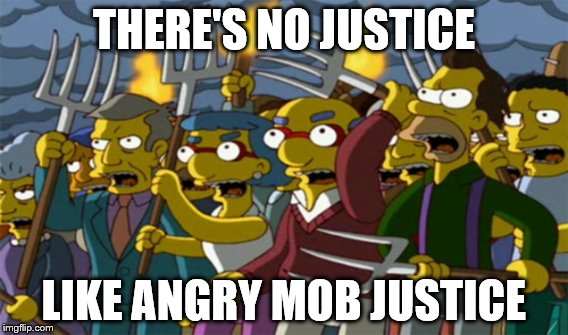Between contractors working on my house and finishing up a book catalog, yesterday was super busy, resulting in short shrift analyzing one of the most important Second Amendment decisions in the history of the Republic. Fortunately, a lot of other good analysts have been doing the heavy lifting.
First up, here’s the actual text of the decision. For this post, I’m going to snip much of Justice Thomas’ reasoning to get to the meat of the conclusions.
In District of Columbia v. Heller, 554 U. S. 570 (2008), and McDonald v. Chicago, 561 U. S. 742 (2010), we recognized that the Second and Fourteenth Amendments protect the right of an ordinary, law-abiding citizen to possess a handgun in the home for self-defense. In this case, petitioners and respondents agree that ordinary, law-abiding citizens have a similar right to carry handguns publicly for their self-defense. We too agree, and now hold, consistent with Heller and McDonald, that the Second and Fourteenth Amendments protect an individual’s right to carry a handgun for self-defense outside the home.
The parties nevertheless dispute whether New York’s licensing regime respects the constitutional right to carry handguns publicly for self-defense. In 43 States, the government issues licenses to carry based on objective criteria. But in six States, including New York, the government further conditions issuance of a license to carry on a citizen’s showing of some additional special need. Because the State of New York issues public-carry licenses only when an applicant demonstrates a special need for self-defense, we conclude that the State’s licensing regime violates the Constitution.
Snip.
In Heller and McDonald, we held that the Second and Fourteenth Amendments protect an individual right to keep and bear arms for self-defense. In doing so, we held unconstitutional two laws that prohibited the possession and use of handguns in the home. In the years since, the Courts of Appeals have coalesced around a “two-step” framework for analyzing Second Amendment challenges that combines history with means-end scrutiny.
Today, we decline to adopt that two-part approach. In keeping with Heller, we hold that when the Second Amendment’s plain text covers an individual’s conduct, the Constitution presumptively protects that conduct. To justify its regulation, the government may not simply posit that the regulation promotes an important interest. Rather, the government must demonstrate that the regulation is consistent with this Nation’s historical tradition of firearm regulation. Only if a firearm regulation is consistent with this Nation’s historical tradition may a court conclude that the individual’s conduct falls outside the Second Amendment’s “unqualified command.” Konigsberg v. State Bar of Cal., 366 U. S. 36, 50, n. 10 (1961).
Snip.
Despite the popularity of this two-step approach, it is one step too many. Step one of the predominant framework is broadly consistent with Heller, which demands a test rooted in the Second Amendment’s text, as informed by history. But Heller and McDonald do not support applying means-end scrutiny in the Second Amendment context. Instead, the government must affirmatively prove that its firearms regulation is part of the historical tradition that delimits the outer bounds of the right to keep and bear arms.
Snip.
This Second Amendment standard accords with how we protect other constitutional rights. Take, for instance, the freedom of speech in the First Amendment, to which Heller repeatedly compared the right to keep and bear arms. 554 U. S., at 582, 595, 606, 618, 634–635. In that context, “[w]hen the Government restricts speech, the Government bears the burden of proving the constitutionality of its actions.” United States v. Playboy Entertainment Group, Inc., 529 U. S. 803, 816 (2000); see also Philadelphia Newspapers, Inc. v. Hepps, 475 U. S. 767, 777 (1986). In some cases, that burden includes showing whether the expressive conduct falls outside of the category of protected speech. See Illinois ex rel. Madigan v. Telemarketing Associates, Inc., 538 U. S. 600, 620, n. 9 (2003). And to carry that burden, the government must generally point to historical evidence about the reach of the First Amendment’s protections. See, e.g., United States v. Stevens, 559 U. S. 460, 468–471 (2010) (placing the burden on the government to show that a type of speech belongs to a “historic and traditional categor[y]” of constitutionally unprotected speech “long familiar to the bar.”
Snip.
If the last decade of Second Amendment litigation has taught this Court anything, it is that federal courts tasked with making such difficult empirical judgments regarding firearm regulations under the banner of “intermediate scrutiny” often defer to the determinations of legislatures. But while that judicial deference to legislative interest balancing is understandable—and, elsewhere, appropriate—it is not deference that the Constitution demands here. The Second Amendment “is the very product of an interest balancing by the people” and it “surely elevates above all other interests the right of law-abiding, responsible citizens to use arms” for self-defense. Heller, 554 U. S., at 635. It is this balance—struck by the traditions of the American people—that demands our unqualified deference.
The test that we set forth in Heller and apply today requires courts to assess whether modern firearms regulations are consistent with the Second Amendment’s text and historical understanding. In some cases, that inquiry will be fairly straightforward. For instance, when a challenged regulation addresses a general societal problem that has persisted since the 18th century, the lack of a distinctly similar historical regulation addressing that problem is relevant evidence that the challenged regulation is inconsistent with the Second Amendment. Likewise, if earlier generations addressed the societal problem, but did so through materially different means, that also could be evidence that a modern regulation is unconstitutional. And if some jurisdictions actually attempted to enact analogous regulations during this timeframe, but those proposals were rejected on constitutional grounds, that rejection surely would provide some probative evidence of unconstitutionality.
Snip. Here’s Thomas disposing of the “musket” red herring:
While the historical analogies here and in Heller are relatively simple to draw, other cases implicating unprecedented societal concerns or dramatic technological changes may require a more nuanced approach. The regulatory challenges posed by firearms today are not always the same as those that preoccupied the Founders in 1791 or the Reconstruction generation in 1868. Fortunately, the Founders created a Constitution—and a Second Amendment—“intended to endure for ages to come, and consequently, to be adapted to the various crises of human affairs.” McCulloch v. Maryland, 4 Wheat. 316, 415 (1819) (emphasis deleted). Although its meaning is fixed according to the understandings of those who ratified it, the Constitution can, and must, apply to circumstances beyond those the Founders specifically anticipated. See, e.g., United States v. Jones, 565 U. S. 400, 404–405 (2012) (holding that installation of a tracking device was “a physical intrusion [that] would have been considered a ‘search’ within the meaning of the Fourth Amendment when it was adopted”).
We have already recognized in Heller at least one way in which the Second Amendment’s historically fixed meaning applies to new circumstances: Its reference to “arms” does not apply “only [to] those arms in existence in the 18th century.” 554 U. S., at 582. “Just as the First Amendment protects modern forms of communications, and the Fourth Amendment applies to modern forms of search, the Second Amendment extends, prima facie, to all instruments that constitute bearable arms, even those that were not in existence at the time of the founding.” Ibid. (citations omitted). Thus, even though the Second Amendment’s definition of “arms” is fixed according to its historical understanding, that general definition covers modern instruments that facilitate armed self-defense. Cf. Caetano v. Massachusetts, 577 U. S. 411, 411–412 (2016) (per curiam) (stun guns).
A long, interesting discussion of the history of firearms regulation (including the right of blacks to own guns for self-defense in the south) snipped. His conclusion:
The constitutional right to bear arms in public for self-defense is not “a second-class right, subject to an entirely different body of rules than the other Bill of Rights guarantees.” McDonald, 561 U. S., at 780 (plurality opinion). We know of no other constitutional right that an individual may exercise only after demonstrating to government offic ers some special need. That is not how the First Amendment works when it comes to unpopular speech or the free exercise of religion. It is not how the Sixth Amendment works when it comes to a defendant’s right to confront the witnesses against him. And it is not how the Second Amendment works when it comes to public carry for self-defense.
New York’s proper-cause requirement violates the Fourteenth Amendment in that it prevents law-abiding citizens with ordinary self-defense needs from exercising their right to keep and bear arms. We therefore reverse the judgment of the Court of Appeals and remand the case for further proceedings consistent with this opinion.
Here’s an analysis of the opinion:
SCOTUS just tossed the use of scrutiny in examining the Second Amendment. No more “shall not be infringed except for…” quibbling. As the opinion says, HELLER did that, and Thomas sounds angry that he’s is now having to tell lower courts to cease and desist the use of means testing. He’s stating it about as clearly as can be done in the English language.
This is even better than the use of strict scrutiny, which was previously the best I thought I could hope for. A quick review of intermediate and strict scrutiny is in order.
Strict scrutiny requires that there must be a compelling government interest for a restriction of rights, it must narrowed tailored, and it must be the least restrictive way to do it.
Intermediate scrutiny requires little more than We need this to fix that.
SCOTUS just said, rather forcefully at that, that “compelling government interest” doesn’t apply when analyzing restrictions on fundamental Constitutional rights. Instead, you must demonstrate that there is a longstanding and general historical tradition for the rule… or you can’t do it at all.
The Ninth Circuit, infamous for invoking limited intermediate scrutiny — despite HELLER — must be excreting masonry construction units right about now. California Dims likewise, because the Ninth has abused scrutiny to uphold all of the state’s 2A infringements.
The Supreme Court just told them, Stop it, damnit! No more games; follow our instructions.
Thomas rebuffed New York’s effort to justify its proper-cause requirement as an effort to regulate guns in “sensitive places” – specifically, crowded urban areas, like Manhattan, where people are likely to gather. Thomas agreed that, as a historical matter, there have long been laws restricting guns in places like courthouses and polling places. Moreover, he continued, restrictions that apply to the modern versions of “sensitive places” may also pass constitutional muster. Although Thomas left open exactly what might qualify as a “sensitive place,” he made clear that urban areas do not meet that definition. The state’s “argument would in effect exempt cities from the Second Amendment and would eviscerate the general right to publicly carry arms for self-defense,” Thomas concluded.
(Hat tip: Borepatch.)
Brandon Herrera has a meme review:









